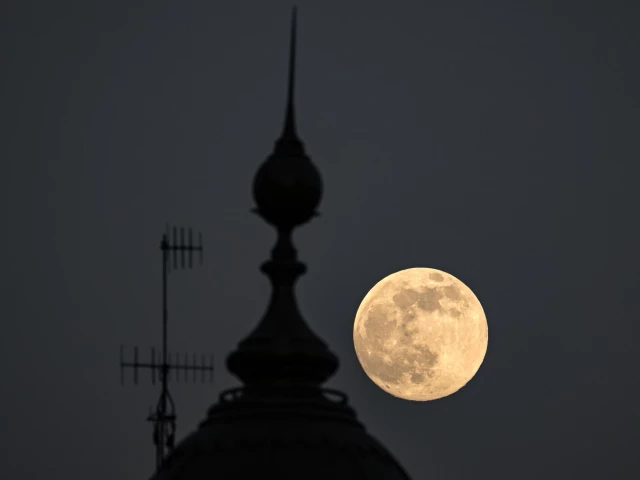The phenomenon is notable for its extraordinary increase in both size and brightness compared to an ordinary full moon
The supermoon known as the Beaver Moon is seen behind an office building in Mexico City on November 4, 2025. PHOTO: AFP
Skywatchers across Pakistan witness a breathtaking view of the year’s biggest supermoon – known as the ‘Beaver Supermoon’ – as the celestial event lights up the night sky with unparalleled brilliance.
According to a spokesman for the Space and Upper Atmosphere Research Commission (SUPARCO), this is the second of three supermoons to appear this year. The phenomenon is notable for its extraordinary increase in both size and brightness compared to an ordinary full moon.
A supermoon occurs when the moon in its full phase reaches the closest point to the earth in its orbit. As a result, it appears larger and significantly brighter than normal.
The spokesperson stated that during the supermoon, the distance between the Earth and the moon shrinks to approximately 221,817 miles, making the moon appear up to 9.7% larger and 16% brighter than average.
The other one #supermoon of 2025 has been imaged across the globe during Tuesday evening and Wednesday morning. The #supermoon in November is known as the Beaver Moon and is one of the biggest and brightest full moons of the year. (Images via VCG) pic.twitter.com/OyIW3qaCrz
— CGTN (@CGTNOfficial) 5 November 2025
Experts note that this is the second supermoon of the year, with the next and last expected in December. Astronomers have also identified this event as the ‘Beaver Supermoon’, which is expected to be the biggest and brightest lunar display in 2025.
Earlier on October 7 atHe first supermoon in 2025 lit up the night sky in Pakistan.
Perigee – the moon’s closest approach to the earth – occurred at 19.00 coordinated universal time on 6 October – corresponding to 12pm PST on October 7th. The SUPARCO official added that the full moon phase occurred at 8:47 PM PST, and since both events happened within a few hours of each other, “it qualified as a supermoon.”
Normally, a supermoon appears up to 14% larger and almost 30% brighter than a typical full moon.



